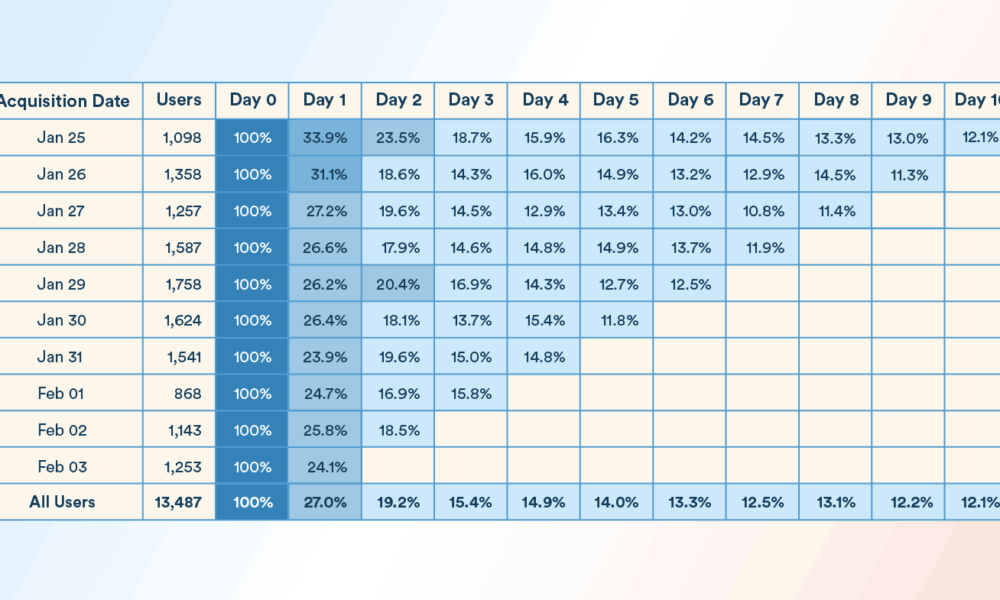How Do We Define Cohort Analysis: Strategies to Boost Retention

Today, in our data-driven world, businesses would like to know more about their customers and keep them longer. Cohort analysis is one of the most effective ways to make this a reality. But how do we define cohort analysis? In simple terms, it’s a method to group users or customers using their characteristics (demographic) or behaviors and observe what they do over time. This approach delivers actionable insights on customer behavior that help businesses improve their strategies to create personalized experiences that will drive growth and customer loyalty.
In this article, we uncover the pros of cohort analysis, how important it is, and how doing it can revolutionize your marketing. Next, we’ll describe practical approaches for boosting retention, and how Apptrove can make cohort analysis simple and impactful in practice.
What is Cohort Analysis?
To explain cohort analysis, imagine that you divide your user base into smaller, easier-to-manage groups that share a specific trait such as sign-up date, purchase behavior, or engagement level. When we look at these cohorts sequentially, we uncover patterns that give us an idea of why some churn and others stick around as well as how different segments interact with products and services.
Compared to standard analytics that treats all users as a whole, cohort analysis digs further into specific groups to reveal wisdom. For example, you might compare those who sign up during a holiday promotion to those who sign up during a normal period. The latter lets you make data-driven decisions specific to each group’s needs.
Benefits of Cohort Analysis
Cohort analysis offers far more than helping you understand user behavior; it provides actionable insights that can alter your business. Here are some benefits of cohort analysis:
Improved Retention Rates: If you can identify patterns about the user churn across cohorts you can implement targeted strategies to reduce attrition and to keep customers engaged longer.
Enhanced Customer Segmentation: Cohorts break users down into smaller groups where they can be better segmented and become targets of the most personalized marketing campaigns.
Data-Driven Decision Making: Cohort analysis allows businesses to view these with clear insights which can help them reach informed decisions on product development, designing marketing strategies, and customer engagement efforts.
Increased Revenue: On the flip side, you can identify high-value cohorts who generate the most revenue and then up or cross-sell to them based on their preferences.
Optimized Marketing Campaigns: Marketing cohort analysis is used to track campaign performance over time to find out which strategies are best for each user segment.
The Importance of Cohort Analysis
Cohort analysis is so important because it brings clarity to what would otherwise be an overwhelming sea of data. Cohort analysis is excellent for businesses that struggle to understand customer behavior at scale by analyzing complex data sets into actionable.
Early Warning System: Cohort analysis is the first of those early warning systems that can spot churn risk or declining engagement in specific cohorts.
Adaptability: This lets businesses change their offerings and contact customers depending on how the customer behavior changes.
Tailored Customer Experiences: Understanding the unique needs and preferences of each cohort allows businesses to create more meaningful, and more loyal experiences.
Cohort Analysis in Marketing
Applied with care, cohort analysis in marketing is a game changer for user acquisition and retention strategies. Here’s how marketers can leverage it:
Lifecycle Marketing: Cohorts can be analyzed based on their lifecycle stages (new user vs. repeat customer) and messaging, and offers crafted to meet segment specific requirement.
A/B Testing: You can use cohort data to test various marketing tactics and find out of a particular user group reacts better to a certain approach.
Churn Prediction: Early re-engagement campaigns to identify at risk cohorts and re-commence interaction before they churn.
Campaign Optimization: See how different cohorts react to different marketing campaign at any time and adapt your strategy accordingly.
Conclusion
For companies to fully leverage the potential of customer data, they need to first learn how to define cohort analysis — the grouping of users based on shared attributes and the observation of their behavior over time — in their very own environment, as it gives the most insightful perspective into retention trends and growth potential.
By marrying the depth of this analytical approach with expert marketing tools like Apptrove, businesses increase their ability to understand their customers more thoroughly — and market more effectively. As one of the most competitive landscapes in the business, mastering cohort analysis isn’t optional, it’s a must if you’re looking to be successful over the long term.





